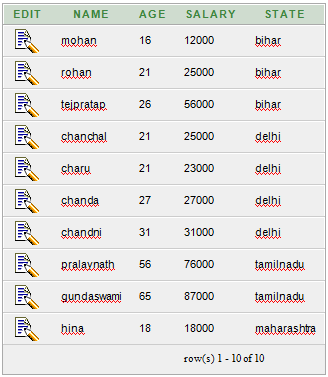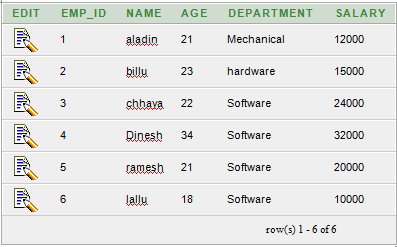Oracle HAVING ClauseIn Oracle, HAVING Clause is used with GROUP BY Clause to restrict the groups of returned rows where condition is TRUE. Syntax: Parameters:expression1, expression2, ... expression_n: It specifies the expressions that are not encapsulated within aggregate function. These expressions must be included in GROUP BY clause. aggregate_function: It specifies the aggregate functions i.e. SUM, COUNT, MIN, MAX or AVG functions. aggregate_expression: It specifies the column or expression on that the aggregate function is based on. tables: It specifies the table from where you want to retrieve records. conditions: It specifies the conditions that must be fulfilled for the record to be selected. having_conditions: It specifies the conditions that are applied only to the aggregated results to restrict the groups of returned rows. Oracle HAVING Example: (with GROUP BY SUM function)Let's take a table "salesdepartment" Salesdepartment table: 
Execute this query: Output: 
Oracle HAVING Example: (with GROUP BY COUNT function)Let's take a table "customers" Customer table: 
Execute this query: Output: 
Oracle HAVING Example: (with GROUP BY MIN function)Let's take a table "employees" Employees table: 
Execute this query: Output 
Oracle HAVING Example: (with GROUP BY MAX function)Execute this query: Output: 
Next TopicOracle UNION
|
 For Videos Join Our Youtube Channel: Join Now
For Videos Join Our Youtube Channel: Join Now
Feedback
- Send your Feedback to [email protected]
Help Others, Please Share









